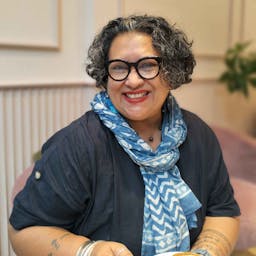Making the change for gender equality is not for wimps
Mar 11, 2019
Story
Making the change for gender equality is not for wimps.
Geraldine Byrne Nason, Chair of the Bureau for the 63rd session of the Commission on the Status of Women, and Ambassador and Permanent Representative of Ireland to the UN set the tone of the 63rd session of the UN Commission of the Status of Women as she recalled the giddiness and hope of the 1995 Beijing Conference in her opening remarks to the Commission:
“We are impatient to get it right” said Nason, “But it’s not enough to add women and stir. Resilience is in the woman’s DNA and the world needs women’s resilience now more than ever"
With the Beijing+25 review scheduled for 2020, along with the 20th anniversary of UN Security Council Resolution 1325 (Women, Peace and Security) Nason requires CSW63 requires member states to pick up the pace and be bold to redefine power:
“The first 63 years of the CSW has been a momentous one.In 1995, we agreed that women’s rights are human rights. Yet, we have been disappointed.”
Member states, she said, have an opportunity to ensure that the outcomes of CSW63 result in new ground, new normative standards to free up women to participate in lead in politics and in peacebuilding, in development – to fulfil their own potential by ensuring there have social protection, access to public services and sustainable infrastructure, affordable childcare, healthcare, education, maternity protection, pensions and safe transport:
"(Because) ...we haven’t succeeded in making sure that women ARE, wherever decisions are being made.”
“Gender equality is fundamentally a question of power” said UN Secretary-General António Guterres who also stressed that the outcomes must also address climate change insecurity and conflict, the pervasive push back on women’s rights and increasing violence against women online and in person.
It is not, he said, the redefinition of women (rights) or back tracking on the gender equality agenda.
That will require mobilisation for meaningful change, to win the fight together by tackling the power imbalances in a world that makes it exclusionary, violent and dangerous for women’s human rights defenders:
“We need you here, now and more than ever(because) our world is a bit lost. Our world needs direction and I know you can guide the way”
The theme of CSW63 is “Social protection systems, access to public services and sustainable infrastructure for gender equality and the empowerment of women and girls” and both Nason and Guterres reminded the Commission that while the theme will address the social and economic barriers that prevent women and girls from achieving their full potential, it was important address the interlinkages between social and economic infrastructure and political infrastructure. It required the redefinition of power:
"When we exclude women, everyone pays the price, when we include women, the whole world wins" said Guterres.
According to UNWomen, CSW63’s priority theme responds to the precarious situation that women and girls continue to face globally highlighted in the Report of the UN Secretary-General and research:
- 740 million women currently make their living in the informal economy. They have limited access to social protection, public services and sustainable infrastructure that could increase their productivity and income security.
- More than 50 per cent of urban women and girls in developing countries live in conditions where they lack at least one of these basic human needs: access to clean water, improved sanitation facilities, durable housing, and sufficient living area.
- Women do 2.6 times more unpaid care and domestic work than men, and only 41 per cent of the world’s mothers with new-borns receive maternity benefits.
- The global gender gap in access to old-age pensions stands at 10.6 percentage ; in 2016 68.4 per cent of men, above retirement age, had access to a pension compared to 57.8 per cent of women above retirement age.
- One in three women are likely to face violence in their lifetimes, but public services, urban planning and transport systems are rarely planned with women’s safety and mobility in mind.
- Critical infrastructure, such as safe sanitation, is lacking in 23 percent of the world’s schools, disproportionately affecting adolescent girls with menstrual hygiene needs.
- Women’s access to sexual and reproductive healthcare services has improved, but the quality of care often remains wanting. For example, rural women’s access to skilled birth attendance is 20 per cent lower than that of urban women; while poor women’s access to modern contraceptives is 19 per cent lower than that of rich women.




